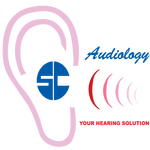What is Ultrasound Imaging?
Ultrasound imaging or scanning is a technique of capturing images from inside the human body by using high frequency sound waves, without involving the use of x-ray. The sound waves are emitted from a handheld device, called the probe or transducer, and upon hitting our body, the sound are reflected and captured by the same probe, which are then processed by the computer into real-time visual images. A different technique commonly used in ultrasound imaging, for example where our blood vessels are evaluated, is called Doppler ultrasound.
What are some common uses of Ultrasound Imaging?
Ultrasound is a valuable way for your doctor to examine and observe the movements of our body's internal organs, like our heart, liver, gallbladder, spleen, pancreas, kidneys, bladder, the blood vessels and fetus or embryo in a pregnant woman. Because ultrasound images are captured in real-time, it is also used in needle guided procedures, where sample tissues from our organs are taken for laboratory testing. Doppler ultrasound is a special technique used to examine blood flow where the doctor can verify and evaluate the presence of blood clots and plaques in the blood vessels.
How should I prepare for the procedure?
Other preparation depends on the type of examination you will have. For some scans, your doctor may instruct you not to eat or drink for as many as 12 hours before your appointment. For others, you may be asked to drink up to six glasses of water two hours prior to your exam and avoid urinating, so that your bladder is full when the scan begins.
What does the equipment look like?
The radiologist/physician spreads a lubricating gel on the patient's abdomen in the area being examined, and then presses the transducer firmly against the skin to obtain images. The ultrasound image is immediately visible on a nearby screen that looks much like a computer or television monitor. The physician or technologist watches this screen during an examination and captures representative images for storage. Often, the patient is able to see it as well.
How is the procedure performed?
The patient is usually positioned on an examination table. A clear gel is applied to the patient's body in the area to be examined, to help good contact with the skin. The sound waves produced by the transducer cannot penetrate air, so the gel helps eliminate air pockets between the transducer and the skin. The radiologist presses the transducer firmly against the skin and sweeps it back and forth to image the area of interest. When the examination is complete, the patient may be asked to dress and wait while the ultrasound images are reviewed, either on film or on a TV monitor. Often, though, the technologist or radiologist is able to review the ultrasound images in real time as they are acquired, and the patient can be released immediately.
What will I experience during the procedure?
Most ultrasound examinations are painless, fast, and easy. You will lie on your back on an examining table. The radiologist will spread some gel on your skin and then press the transducer firmly against your body, moving it until the desired images are captured. There may be varying degrees of discomfort from pressure as the technologist guides the transducer over your abdomen, especially if you are required to have a full bladder. The examination usually takes less than 30 minutes.
Who interprets the results and how do I get them?
A radiologist, or other physicians experienced in ultrasound and other examinations, will analyze the images and send a signed report with his or her interpretation to the patient's personal physician. The patient receives ultrasound results from the referring physician who ordered the test results. In some cases the radiologist may discuss preliminary results with you at the conclusion of your examination. New technology also allows for distribution of diagnostic reports and referral images over the Internet at many facilities.
What are the benefits vs. risks?
Benefits
Ultrasound scanning is non-invasive (no needles or injections, in most cases) and is usually painless.
Ultrasound is widely available and easy to use.
Ultrasound uses no ionizing radiation, and is the preferred image for diagnosis and monitoring of pregnant women and their unborn infants.
Ultrasound provides real-time imaging, making it a good tool for guiding procedures such as needle biopsies.
Ultrasound images can visualize structure, movement and live function in the body's organs and blood vessels.
Risks
For standard diagnostic ultrasound there are no known harmful effects on humans.













